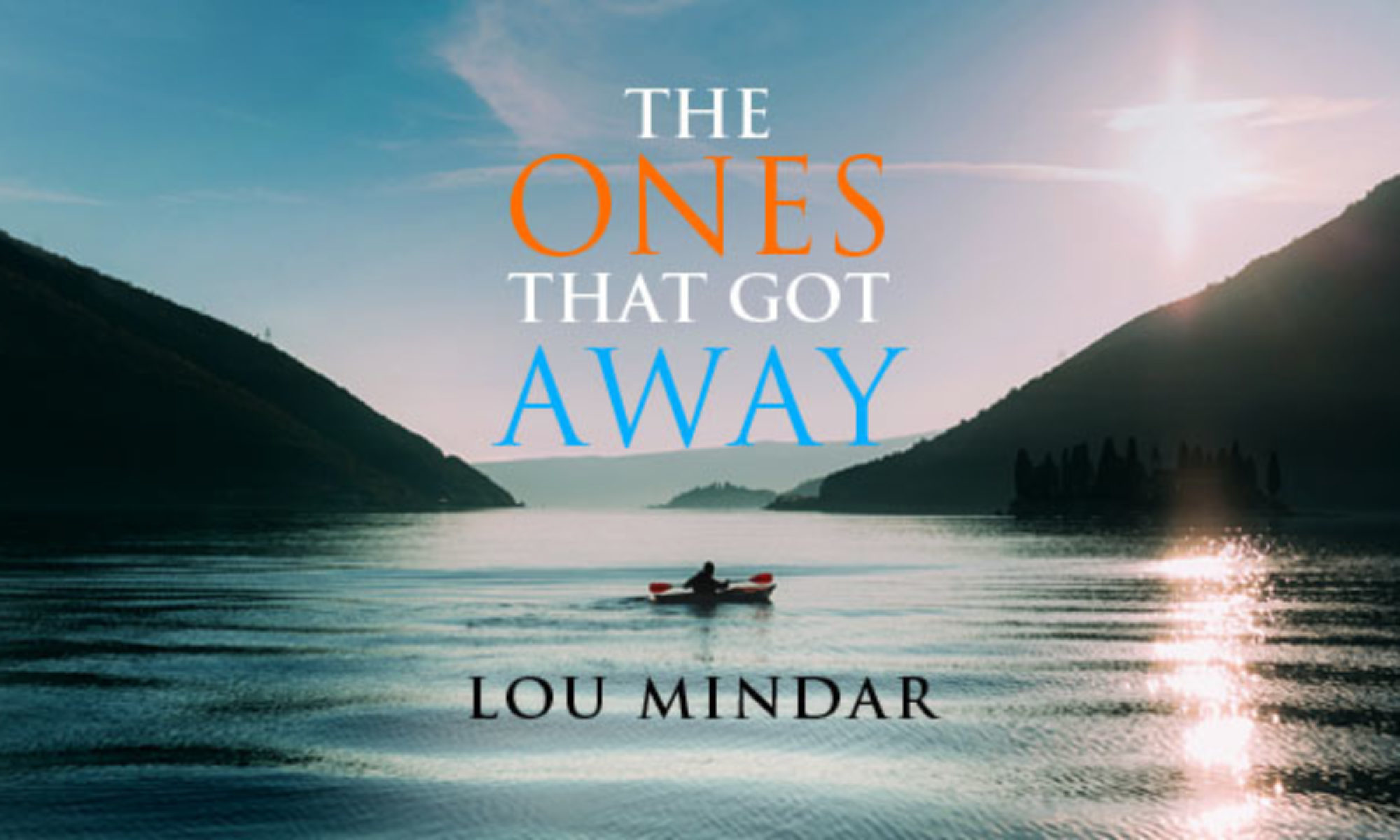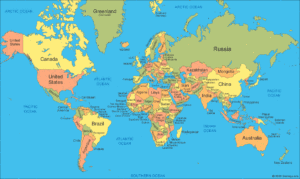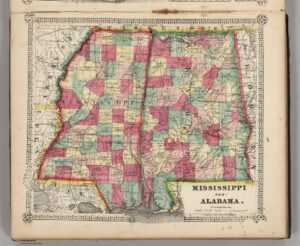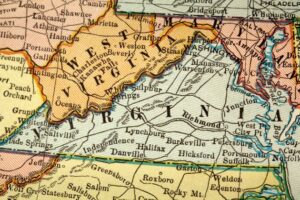 Tonight, The New York Yankees take on the Chicago White Sox at the Field of Dreams in Dyersville, Iowa. The field is very close to the one that was featured in the hit movie, Field of Dreams, starring Kevin Costner, Amy Madigan, and James Earl Jones.
Tonight, The New York Yankees take on the Chicago White Sox at the Field of Dreams in Dyersville, Iowa. The field is very close to the one that was featured in the hit movie, Field of Dreams, starring Kevin Costner, Amy Madigan, and James Earl Jones.
In honor of the historic game, I’m sharing a short story (a parody) I wrote several years ago that was inspired by the movie. It’s the story of the bonds between a father and son, the way baseball touches each of our lives, and its about a man’s love for a woman he barely knows, even if that love is purchased by the hour.
Without further ado, I present:
Cletus’ Field of Dreams
The year was nineteen-ought-six. Ella Fitzgerald was in the White House, the “Hustle” was all the rage in the dance clubs, and excitement ruled Europe after Germany announced they had discovered a new type of potato salad. It was also the year that my family migrated from the old country to become Americans.
My father was a proud man. He came to this country with just thirty-nine cents in his pocket and a couple of formal gowns in his suitcase. But that didn’t stop him from realizing his dream of buying some acreage and becoming a dirt-poor farmer.
A few days after my seventeenth birthday, I decided it was time to leave the farm and see the world for myself. With enough money for bus fare and little else, I headed off to the Big City.
On my first night in town, near the bus depot, I met a girl leaning against a lamp post.
“Are you looking for a date?” she asked.
I was taken by surprise. “Who, me?”
“Yeah, you. Are you looking for a date?”
She was a beautiful woman with big brown eyes and bright red lips. For me, it was love at first sight. “Well, what’s your name?” I asked.
“What do you think my name is?
I took a guess and said, “You look like a Roxie to me.”
“That’s exactly right,” she said. “You’re a smart one.”
I was embarrassed and didn’t know what to say.
“So, Smarty, do you want a date or not?”
I nodded my head so fast it made me dizzy. “I sure do.”
“Then go up to that house right there and tell them you want to date me.” She pointed at a big, older house with a wide front porch.
Back at home, it was customary for the boy to ask out the girl, not the other way around. And usually, if you wanted to take a girl out on a date, you asked her, not her parents. Already, I was learning that things were done a lot differently in the Big City.
Roxie’s dad was sitting on the front porch. He was a big guy and was wearing a white t-shirt without any sleeves. He had a tattoo on his right arm, and he held a baseball bat. .
“Hello, sir,” I said. “I’d like to ask your permission to date your daughter, Roxie.” I was nervous and couldn’t stop looking at my feet.
Roxie’s dad laughed a kind of ugly laugh and said, “You need to talk to the woman in the house.”
Just as I was about to knock on the screen door, a large woman appeared in the doorway. “Can I help you?” she asked. She was smoking a cigarette, and when she talked, smoke came out of her nose and mouth.
“Yes ma’am,” I said. “I’d like your permission to date your daughter, Roxie.”
“Who?”
“Your daughter.” I pointed at Roxie who was still out by the street lamp.
“Oh, that one. She’ll be twenty dollars.”
“Pardon me?” I was confused.
“If you want to date Roxie, it will cost you twenty dollars.”
As best I could tell, in the Big City, you had to pay the parents – or at least leave a deposit – if you wanted to date their daughter. The problem was, I didn’t have twenty dollars.
“I’m sorry ma’am, but I don’t have that much.”
“How much you got?”
I took all the money out of my pocket and counted it. “I have a little more than nine dollars.” I looked hopefully at Roxie’s mom.
“Sorry, kid. Roxie’s twenty bucks an hour. I have another girl you could have for ten dollars.”
I wondered for a moment why she would charge less for one daughter than another, but it didn’t matter. I was in love with Roxie, and I was determined to ask her out on a date. I turned, dejected, and walked by Roxie. “Don’t worry,” I said. “I‘m going to earn some money, then come back for you.”
“Okay, Smarty. I’ll be right here,” she said.
* * * * *
I had to have Roxie, but how was I going to get the money to pay her parents? And what was that about twenty dollars per hour? That had to be a mistake.
That night, I couldn’t sleep, trying to figure out how I could get the money for Roxie. I wanted her so bad. I also couldn’t sleep because I was laying on a slab of concrete under a highway overpass. In the morning, my back was stiff, my head hurt, and a crazy man was standing over me.
“What do you want?” I scurried away from him.
“This is my bridge,” he said. His voice was gruff and menacing, and one of his eyes was the color of sour milk. “Why don’t you go back to the farm where you came from?”
“The farm? How do you know I come from the farm?”
He looked me up and down with his one good eye. “What? Are you stupid? You’re wearing overalls, you’ve got manure on your shoes, and you smell like a pig.”
“We don’t have pigs on our farm,” I said.
“I don’t care. Just get away from my bridge.” The man began hissing like a leaky tire. He threw a fit, moaning indecipherable words and flailing his arms. When he began chucking rocks at me, I had an idea. I knew how I was going to get the money for Roxie. I climbed out from under the bridge, and up on the highway, I began thumbing a ride.
* * * * *
I’d been hitchhiking for about twenty minutes when a Volkswagen van pulled over in front of me. I ran to the van and got in the back. Inside, two men were sitting in the front seats.
“Hi, I’m Ray,” the driver said.
“And I’m Terry,” the passenger said.
“I’m Cletus,” I said. “But my friends call me Clete.”
“Nice to meet you Clete,” Ray said. “Where’re you heading?”
“I’m heading out to farm country to find a job as a hired hand. I need to make enough money to pay for my girlfriend.”
“Those girlfriends can be expensive.” Terry let out a deep, guttural laugh.
There was something familiar about Terry’s voice. “Hey Terry,” I said. “Your voice sounds familiar to me. Did you do one of the voices in The Lion King?”
“No,” Terry said too quickly. “I’m a writer and a software developer from Boston.”
Both Terry and Ray got real quiet after that. We had been driving in silence for a while when Ray pulled over to pickup another hitchhiker. “We can use all the good karma we can get,” Ray said.
The hitchhiker got in and closed the door. “Thanks for stopping. I’m Archie Graham.”
Terry and Ray just looked at each other. I extended my hand. “Hi, Archie. I’m Clete.”
Terry and Ray introduced themselves. “Where’re you heading?” Ray asked.
“I’m a ball player,” he said. “I hear there are teams all across the Midwest that will help you find a job if you play for them.”
Ray and Terry were quiet, so I spoke. “Archie, let me ask you a question. Do you think I smell like a pig?”
Archie looked at Ray and Terry, but they refused to return his gaze. “I don’t know,” Archie said. “I can’t smell anything. I have a cold.” He turned away from me and stared out his window at the passing countryside.
* * * * *
When we got to Ray’s farm, I saw that he had plowed under some of his corn and had built a baseball field. There were guys in white uniforms playing on the field.
“Hi Ray,” one of the ball players yelled from the field.
“That’s Shoeless Joe Jackson,” Archie said, amazed at what he was seeing.
“That’s right,” Ray said. “Why don’t you head out there and join the game.”
“Really?” Archie asked.
“Sure, go ahead.” Archie grabbed his baseball glove out of the van and ran onto the field. I looked away from the field for a moment and when I looked back, Archie was wearing a uniform just like the other players. I looked at Ray for an explanation, but he just smiled.
A blond-haired woman and a little girl came out of the house. “Welcome home,” the woman said to Ray. She gave him a kiss.
“Terry and Clete, this is my wife, Annie, and my daughter, Karin,” Ray said. “This is Terry and Clete.”
“It’s nice to meet you both.” Annie was unusually chipper, like an aging cheerleader on speed.
“Hi,” Karin said. She looked up at me and scrunched up her nose. “You smell funny,” she said.
Ray laughed. “Let’s all head down to the field.”
We sat on bleachers near first base. We had only been sitting there a few minutes when one of the ballplayers came over and asked Ray, “Is this Heaven?”
“No. This is Iowa,” Ray said.
A red-haired guy I had once seen on “Thirtysomething” walked across the field, right through the game, and up to the bleachers. “Ray, you’ve plowed under some of your most profitable acreage. You can’t afford to pay your mortgage. I’m sorry Ray, but we’re going to have to foreclose on the farm,” he said.
“But what about the players?” Karin asked.
“What players?” the red-haired guy asked.
“The players out on the field. What about them?”
The red-haired guy looked out at the field and then back at Karin. “There are no players out there.” Then, for no apparent reason, the red-haired guy grabbed Karin and began shaking her. Karin fell backwards off the bleachers and lay motionless on the ground. She wasn’t breathing and her face had turned purple.
Annie gasped and stood up. “I’m going to call an ambulance.” She started to run toward the house, but Ray stopped her.
“Wait a minute, Annie,” Ray said. He looked out at the field. “Doc,” he yelled.
The ballplayers were all standing on the field looking our way when Archie walked toward us. When he crossed the first base line, Archie’s uniform disappeared, and he was suddenly wearing an overcoat and carrying a black bag. He had aged about a hundred years.
“What the hell?” I said, but no one seemed to hear me.
“What seems to be the problem here?” Old Archie asked.
“She fell,” Ray said.
Old Archie looked Karin over and said, “This child is choking.” Old Archie then turned Karin over and hit her hard on the back. A large chuck of hot dog flew out of Karin’s mouth and landed on the grass next to the bleachers. Karin began breathing again and she opened her eyes.
“Oh, thank God,” the red-haired guy said.
“What do you mean ‘thank God?” I asked. “You’re the SOB who did that to her.” I wound up and punched the red-haired guy in the gut. He doubled over, and tears formed in his eyes. He stumbled backwards and struggled to speak while catching his breath.. “Hey, there are players.”
“Are you going to finish that hot dog?” I asked Karin.
Karin looked at the hot dog lying on the ground and shook her head.
“Cool,” I said and picked it up. “Thanks, I’m starved.”
“You shouldn’t have hit him,” Ray said to me.
“What do you mean?” I asked. “He almost killed your daughter.”
“Well, that’s the thing. I’m not really sure she’s my daughter.”
I was about to comment on what Ray had said when another one of the ballplayers came up to us and asked Ray, “Is this Heaven?”
“No,” Ray said. “This is Iowa.
Terry stood up and gave a speech about the history of baseball and how people would come to Ray’s farm and would pay to see the field. To be honest, the speech started out good, but got boring pretty quickly. When Terry finished, I said, “Are you sure you didn’t do a voice on The Lion King?”
“No,” Terry said. “Quit asking me that.”
“Do me a favor, Terry,” I said. “Say, ‘This is CNN.”
“No. Leave me alone.”
* * * * *
We were watching the dead-but-not-gone ball players from our seats in the bleachers. Annie and Karin were cheering. The batter took a big swing and hit a fly ball into deep left field. Shoeless Joe Jackson ran after it and caught the ball just in front of the corn. The way he ran was smooth and graceful, like he was gliding.
“They say that Shoeless Joe’s glove is where triples go to die,” Ray said
“That’s horrible,” I said. “Doesn’t Shoeless Joe like cripples?”
“Not cripples,” Ray said. “Triples.”
“So, Joe likes cripples?” I asked.
“No,” Ray said. “I mean, I don’t know.”
“Why doesn’t Shoeless Joe like cripples?” Annie asked.
“He does. Or he might,” Ray said. “I don’t know anything about cripples.”
“What’s a cripple?” Karin asked.
“It’s someone who can’t walk,” Annie said.
“Why do they go to Shoeless Joe’s house to die?” Karin asked.
Ray was exasperated. “They don’t go to Shoeless Joe’s house. They go to his glove.”
“How do they fit in his glove?” Karin asked.
Ray stood up and faced us. “Okay, I’m going to say it again, so listen carefully. They say that Shoeless Joe’s glove is where TRIPLES – Understand? TRIPLES – go to die.”
“Oh, that makes more sense,” I said. “You should have said that the first time.”
“And you shouldn’t speculate about how Shoeless Joe feels about cripples,” Annie said.
Ray put his head in his hands. “I give up.”
Everybody went back to watching the game. I scooted over by Ray and said, “I didn’t want to say anything before, but you look a lot like that guy from The Untouchables. Anybody ever tell you that before?”
Ray looked at me for a second and then said, “Yeah. Once in a while at the feed store, people will say things.”
“Yeah, I know how you feel,” I said. “A lot of people tell me I look like Tom Lester.”
“Who?”
“You know, the actor Tom Lester.”
Ray scratched his head and said, “I’m afraid I don’t know Tom Lester.”
“He played Eb on Green Acres. You know who I’m talking about now?”
Ray shook his head. “I don’t really remember what he looked like.”
“He looked like me.”
“Oh, yeah. Right”
The game ended and the players were picking up their bats and balls. One of the players walked over towards us and asked, “Is this Heaven?”
I had had enough. “No, this is not Heaven,” I screamed. “Look around, for God’s sake. This is a baseball field surrounded by a corn field. In fact, there are corn fields in every direction for as far as the eye can see. Do you really think that Heaven would look like this? Why don’t you think a little bit before you ask dumb questions?”
The ballplayer was stunned. He stood in front of us, trembling. Shoeless Joe walked over and told the trembling ballplayer to join the others. He gave me a dirty look and then said, “Ray, we’re going to take off.”
“Okay, Joe. Will we see you tomorrow?”
“I don’t know.” Joe pointed at me. “Is Stinky going to be here?”
“I don’t think so. Clete is looking for a job.”
“In that case, we’ll come back.” Shoeless Joe then turned his attention to Terry. “Hey Terry, you want to come with us?”
“Where? Out there?” Terry pointed toward the corn field.
Joe nodded.
“What about me?” Ray protested.
“I didn’t invite you, Ray. I invited Terry.”
“But I built this field for you. I plowed under my corn for you.”
“What are you saying, Ray? That you did all of that and now you deserve a reward? Is that why you built the field, Ray?”
“No, that’s not what I’m saying,” Ray said. “It’s just that, I don’t know. I built all of this and yes, I guess I deserve a reward.”
“Ray, it doesn’t make sense for you to go,” Terry said. “You have a family and a farm to take care of. I don’t have any strings. It makes sense for me to go.”
“You’d better tell me all about it,” Ray said.
Shoeless Joe and Terry walked toward the corn. Just before they reached it, I yelled, “Hey Joe, can I come with?”
“No” Joe said without turning around. He and Terry disappeared into the corn.
“Hey, wait,” Ray yelled. “I thought I was supposed to have a catch with my dad”
Suddenly, a booming, familiar voice said, “Luke, I am your father.” The voice came from a large spaceman-looking guy dressed all in black.
“His name’s Ray,” I said.
“Oh, right,” the spaceman said. “Ray, I am your father. Want to have a catch?”
“Sure, Dad.”
As I watched Ray and his spaceman father playing catch, I noticed a long line of cars making their way to the farm. I had an idea.
“Ray, I’m going to go up to the house and help park cars, okay?”
“Sure Clete.”
“Can I keep any tips I get?”
“Why not?” Ray said.
Later that night, I had collected enough money from tips and loose change I found inside the cars I was parking to head back to the Big City to date Roxie. As I was leaving, I walked past the field. Ray was in the outfield and the spaceman was using a light saber to hit fly balls to him.
“Hey Ray,” I said. “I’m heading back to the Big City to date Roxie.”
“Good luck.”
I walked a few more steps and thought of one other thing I wanted to say. “Hey Ray. Don’t make Waterworld.”
He didn’t seem to hear me.

 COVID-19 has been cured! Well, probably not. Here’s what I’m talking about.
COVID-19 has been cured! Well, probably not. Here’s what I’m talking about. Let’s call him Ryan. Truth is, I don’t know his real name. He was sitting on a median at a Florida intersection dressed in shorts and a threadbare T-shirt. He had a backpack sitting next to him, and he was holding a small sign, too small for everything he had written on it. The only word I could make out was “Homeless.” The rest was a mystery.
Let’s call him Ryan. Truth is, I don’t know his real name. He was sitting on a median at a Florida intersection dressed in shorts and a threadbare T-shirt. He had a backpack sitting next to him, and he was holding a small sign, too small for everything he had written on it. The only word I could make out was “Homeless.” The rest was a mystery. Here’s the question:
Here’s the question: Why do smart people do dumb things? I’m not talking about ticky-tacky little things like backing the car into a garbage can or touching a hot stove. After all, people are human, and humans make mistakes. What I’m talking about is choosing to do the wrong thing even when you know it is wrong.
Why do smart people do dumb things? I’m not talking about ticky-tacky little things like backing the car into a garbage can or touching a hot stove. After all, people are human, and humans make mistakes. What I’m talking about is choosing to do the wrong thing even when you know it is wrong. I have a sinking feeling, a sense of dread that is threatening to consume me. And every day, it seems to get worse.
I have a sinking feeling, a sense of dread that is threatening to consume me. And every day, it seems to get worse. I was watching 60 Minutes recently and saw a story about the Tulsa Massacre of 1921. It was an amazing story, made all the more amazing by the fact that the massacre occurred 100 years ago, yet I had never heard of it. I wasn’t alone. The 60 Minutes crew interviewed a man who was born and educated in Tulsa, but he had never heard of the massacre either.
I was watching 60 Minutes recently and saw a story about the Tulsa Massacre of 1921. It was an amazing story, made all the more amazing by the fact that the massacre occurred 100 years ago, yet I had never heard of it. I wasn’t alone. The 60 Minutes crew interviewed a man who was born and educated in Tulsa, but he had never heard of the massacre either. I like living in the United States. Sure, I’ve never lived anywhere else, but I think we have a pretty good quality of life here. We have freedom, and opportunity, and at least in general, civic pride. True, the United States is not perfect. Our healthcare system is among the worst in the free world (It’s the most expensive with some of the worst outcomes), we imprison a higher percentage of our population than any other country on earth, and we don’t do a particularly good job of taking care of the least among us. Even so, most people in the United States enjoy a high standard of living when compared to other countries.
I like living in the United States. Sure, I’ve never lived anywhere else, but I think we have a pretty good quality of life here. We have freedom, and opportunity, and at least in general, civic pride. True, the United States is not perfect. Our healthcare system is among the worst in the free world (It’s the most expensive with some of the worst outcomes), we imprison a higher percentage of our population than any other country on earth, and we don’t do a particularly good job of taking care of the least among us. Even so, most people in the United States enjoy a high standard of living when compared to other countries. If you look at a map of the United States and focus on the southeast portion of the country, you might notice something kind of unusual. Look directly at Mississippi and Alabama. See anything strange or interesting. If you see that the two states are near mirror images of each other, you’re seeing what I’m seeing. There’s a story behind why these two states look so much alike.
If you look at a map of the United States and focus on the southeast portion of the country, you might notice something kind of unusual. Look directly at Mississippi and Alabama. See anything strange or interesting. If you see that the two states are near mirror images of each other, you’re seeing what I’m seeing. There’s a story behind why these two states look so much alike. People of a certain age don’t even have to think about what words come after the phrase, “Almost Heaven.” The obvious answer is, “West Virginia.” But is that really correct?
People of a certain age don’t even have to think about what words come after the phrase, “Almost Heaven.” The obvious answer is, “West Virginia.” But is that really correct?